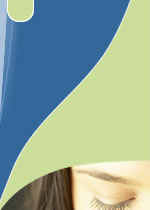ARTEMISININ - a metabolite of Artemisia Species
Artemisin also known as Artemisinin is present in many artemisia species, particularly in A. annua, A. absinthium, A. asiatica, A. capillaris and A. afra. All these artemisia species are morphologically very close to each other and are used in traditional medicine for similar disorders. The World Health Organization recommends the use of artemisinin (ART) and its derivatives in geographical areas with multidrug-resistant malaria.
Anti-Inflammatory activity of Artemisinin
Xu H et al. explored the effect of Artesunate on TNF-α-induced production of interleukins IL-1beta, IL-6 and IL-8 in human rheumatoid arthritis (RA) fibroblast-like synoviocytes (FLS). Artesunate decreased the secretion of IL-1beta, IL-6 and IL-8 from TNF-α-stimulated RA FLS in a dose-dependent manner (Xu H et al 2007)Xu H, He Y, Yang X et al. (2007) Anti-malarial agent artesunate inhibits TNF-{alpha}-induced production of proinflammatory cytokines via inhibition of NF-{kappa}B and PI3 kinase/Akt signal pathway in human rheumatoid arthritis fibroblast-like synoviocytes. Rheumatology (Oxford) Feb. 2007 (ahead of print). Artesunate also prevented TNF-α-induced nuclear NFқB translocation, DNA-binding activity and gene transcriptional activity. The authors postulated that Artesunate inhibits production of IL-1beta, IL-6 and IL-8 through inhibition of NFқB signalling pathway. They also showed that Artesunate prevented Akt phosphorylation, and that the inhibition of Akt activation might inhibit IL-1beta, IL-6 and IL-8 production induced by TNF-α.
Anti-Cancer activity of Artemisinin
In 1997 and 1998 Beekman et al. reported stereochemistry-dependent cytotoxicity in Artemisinin and its semi-synthetic analogue Artesunate (Beekman, AC et al. 1997Beekman, AC., Barentesen, ARW., Woedenbag, HJ., Wden, WV., Pras, N., Konings, AWT., El-Feraly, FS., Galal, AM. and Wikstrom, HV., J. Nat. Prod., (1997), 60, 325. ; Beekman, AC et al. 1998)Beekman, AC., Wierenga, PK., Woedenbag, HJ., Uden, WV., Pras, N., Konings, AWT., El-Feraly, F.S., Galal, AM. and Wikstrom, HV., Plant. Med., (1997), 64, 615. Artemisinin has now been analyzed for its anti-cancer activity against 55 cell lines of the Developmental Therapeutics Program of the National Cancer Institute, USA. Artemisinin was most active against leukemia and colon cancer cell lines (mean GI50 values: 1.11±0.56 microMol and 2.13±0.74 microMol , respectively). Non-small cell lung cancer cell lines showed the highest mean GI50 value (25.62±14.95 microM) indicating the lowest sensitivity towards Artemisinin in this test panel. Intermediate GI50 values were obtained for melanomas, breast, ovarian, prostate, CNS, and renal cancer cell lines. Importantly, a comparison of Artemisinin's cytotoxicity with those of other standard cytostatic drugs showed that Artemisinin was active in molar ranges comparable to those of established anti-tumor drugs. Furthermore, CEM Artemisinin was tested on leukemia sub-lines resistant to either doxorubicin, vincristine, methotrexate, or hydroxyurea which do not belong to the N.C.I. screening panel. None of these drug-resistant cell lines showed cross resistance to Artemisinin. To gain insight into the molecular mechanisms of Artemisinin's cytotoxicity, Efferth and colleagues used a panel of isogenic Saccaromyces cerevisiae strains with defined genetic mutations in DNA repair, DNA checkpoint and cell proliferation genes. A yeast strain with a defective mitosis regulating BUB3 gene showed increased Artemisinin sensitivity and another strain with a defective proliferation-regulating CLN2 gene showed increased Artemisinin resistance over the wild-type strain, wt644. None of the other DNA repair or DNA check-point deficient isogenic strains were different from the wild-type. (Efferth et al. 2001)Efferth T, Dunstan H, Sauerbrey A, Miyachi H and Chitambar CR: The anti-malarial Artesunate is also active against cancer. Int J Oncol (2001) 18: 767-773. Other independent studies have confirmed these findings and additionally demonstrated anti-angiogenic effects of artemisinin (Reungpatthanaphong P et al. 2002)Reungpatthanaphong P and Mankhetkorn S: Modulation of multidrug resistance by artemisinin, Artesunate and dihydroartemisinin in K562/Adr and GLC4/Adr resistant cell lines. Biol Pharm Bull (2002) 25: 1555-1561. These results and the known low toxicity of Artemisinin are clues that Artemisia herb may be a promising novel candidate for cancer chemotherapy
Anti-Angiogenic effects of Artemisinin
Chen HH and his colleagues demonstrated the inhibition of human cancer cell line growth caused by anti-angiogenic effect of artemisinin derivatives (Chen HH, et al. 2003Chen HH, Zhou HJ and Fang X: Inhibition of human cancer cell line growth and human umbilical vein endothelial cell angiogenesis by artemisinin derivatives in vitro Pharmacol Res (2003), 48: 231-236; Reungpatthanaphong P et al. 2002Reungpatthanaphong P and Mankhetkorn S: Modulation of multidrug resistance by artemisinin, Artesunate and dihydroartemisinin in K562/Adr and GLC4/Adr resistant cell lines. Biol Pharm Bull (2002) 25: 1555-1561; Efferth T et al. 2003)Efferth T, Sauerbrey A, Olbrich A, Gebhart E, Rauch P, et al: Molecular modes of action of Artesunate in tumor cell lines. Mol Pharmacol (2003) 64: 382-394. ).
Artemisinin induces apoptosis in cancer cells
Singh and Lai from from the Department of Bioengineering, University of Washington, Seattle, USA. showed that artemisinin can selectively kill cancer cells in vitro and retard the growth of implanted fibrosarcoma tumors in rats. They also investigated its mechanism of cytotoxicity. In their experiments Molt-4 cells, in complete RPMI-1640 medium, were first incubated with 12 microM of human holotransferrin at 37 CO in a humid atmosphere of 5% CO2 for one hour. This enhanced the iron supply to the cells. The cells were then pelleted and transferred to a complete RPMI-1640 containing 200 microM of an analog dihydroartemisinin (DHA) and incubation was started. In addition, some culture samples were treated with holotransferrin alone and some (controls) were assayed without neither holotransferrin nor DHA treatment. Cells were counted and DNA diffusion assay was used to evaluate apoptosis and necrosis in each sample at 0 h and at 1, 2, 4 and 8 h of incubation. Their resulted showed that DHA treatment significantly decreased cell counts and increased the proportion of apoptosis in cancer cells compared to controls (chi2=4.5, df=1, p<0.035). Addition of holotransferrin significantly further decreased cell counts (chi2=4.5, df=1, p<0.035) and increased apoptosis (chi2=4.5, df=1, p<0.035). No necrotic cells were observed (Singh NP et al. 2004)Singh NP, Lai HC Artesiminin induces apoptosis in human cancer cells. Anticancer Res (2004) 24(4):2277-80..
Back to Table of Contents
References
Xu H, He Y, Yang X et al. (2007) Anti-malarial agent artesunate inhibits TNF-{alpha}-induced production of proinflammatory cytokines via inhibition of NF-{kappa}B and PI3 kinase/Akt signal pathway in human rheumatoid arthritis fibroblast-like synoviocytes. Rheumatology (Oxford) Feb. 2007 (ahead of print)
Beekman, AC., Barentesen, ARW., Woedenbag, HJ., Wden, WV., Pras, N., Konings, AWT., El-Feraly, FS., Galal, AM. and Wikstrom, HV., J. Nat. Prod., (1997), 60, 325.
Beekman, AC., Wierenga, PK., Woedenbag, HJ., Uden, WV., Pras, N., Konings, AWT., El-Feraly, F.S., Galal, AM. and Wikstrom, HV., Plant. Med., (1997), 64, 615
Chen HH, Zhou HJ and Fang X: Inhibition of human cancer cell line growth and human umbilical vein endothelial cell angiogenesis by artemisinin derivatives in vitro Pharmacol Res (2003), 48: 231-236
Efferth T, Dunstan H, Sauerbrey A, Miyachi H and Chitambar CR: The anti-malarial Artesunate is also active against cancer. Int J Oncol (2001) 18: 767-773
Efferth T, Sauerbrey A, Olbrich A, Gebhart E, Rauch P, et al: Molecular modes of action of Artesunate in tumor cell lines. Mol Pharmacol (2003) 64: 382-394
Reungpatthanaphong P and Mankhetkorn S: Modulation of multidrug resistance by artemisinin, Artesunate and dihydroartemisinin in K562/Adr and GLC4/Adr resistant cell lines. Biol Pharm Bull (2002) 25: 1555-1561







